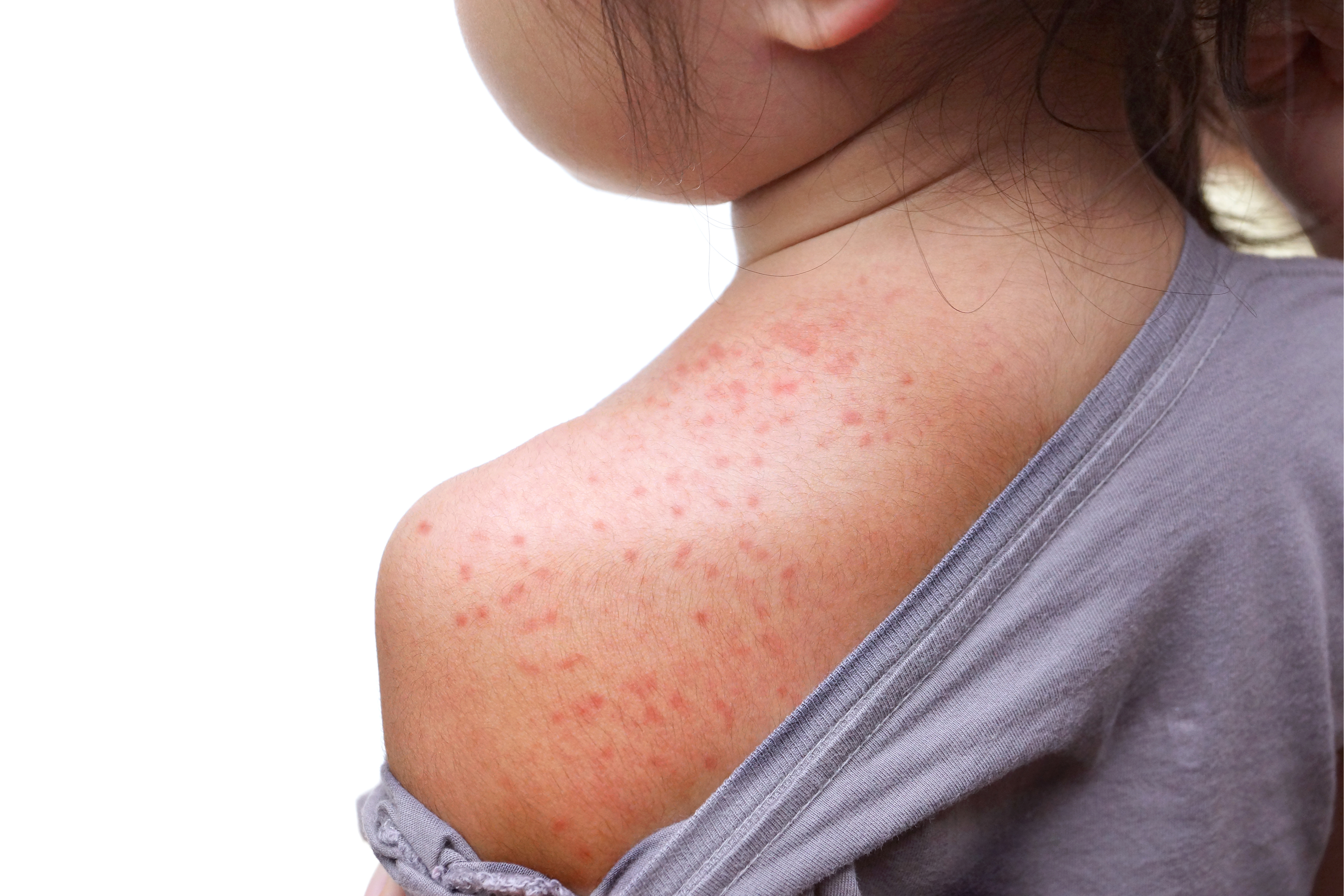Juvenile Scleroderma (Localized)
Juvenile scleroderma causes hardening and tightening of the skin.
Scleroderma, which literally means “hard skin,” is a rare disease that affects the skin and connective tissue (fibers that provide the structure and support for your body). There are two types of scleroderma – localized and systemic.
Localized scleroderma, also called juvenile scleroderma, mainly involves the skin and is more common in kids and teens (though adults can get it, too). Girls are more likely than boys to have juvenile scleroderma.
Symptoms
Usually localized scleroderma causes hardened, tight skin patches that appear shiny and smooth. But symptoms vary depending on the type of scleroderma. Linear and morphea types have unique skin symptoms that occur on one part of the body.
- Morphea. This type causes one or more hard, oval-shaped or irregular patches on any part of the body. Patches are whitish or darkened and sometimes have a purplish or reddish ring.
- Linear. Lines or streaks of thickened skin form over one or several areas of the body, such as an arm, leg or the head. Joint symptoms may also occur such as pain, stiffness and difficulty moving joints.
Health Effects
In many cases, skin symptoms soften and disappear over time. Rarely, linear scleroderma can cause scarring and changes in face shape.
Linear scleroderma may cause hardening of the underlying muscle and bone and affect bone growth. Only 10 to 20% of people with localized scleroderma develop joint issues or arthritis. Left untreated, linear scleroderma may also cause permanent size changes in the limbs it covers (for example, the leg, arm or finger).
Diagnosis
The doctor will ask about symptoms and family history of similar diseases. A physical exam and blood tests can help rule out other conditions. The doctor may remove a small tissue sample (biopsy) of the affected skin to check for abnormalities.
A rheumatologist (doctor who specializes in treating arthritis) or dermatologist (skin doctor) may help to diagnose and treat scleroderma. About 80% of linear scleroderma cases are diagnosed before age 20. Sytemic scleroderma (also called systemic sclerosis) may affect many body parts and is more common in adults. It rarely occurs in children.
Treatment
There is no cure for localized scleroderma, but treatment can help manage symptoms. Many cases of morphea scleroderma clear up on their own. Linear scleroderma lesions can remain active for years or return after treatment stops.
Medications
• Corticosteroids.
• Calcipotriene.
• Tacrolimus.
• Pimecrolimus.
• Imiquimod.
Linear scleroderma may be treated with drugs that reduce inflammation and help improve skin changes:
• Methotrexate.
• Corticosteroids.
Clinical and Surgical Procedures
Phototherapy, which involves brief exposure to artificial ultraviolet light, may help soften skin and reduce severe skin symptoms. However, the long-term effects of exposing children to UV light are still being researched.
Physical Therapy
• Teaching strength and range-of-motion exercises to keep skin and joints flexible.
• Performing body manipulation (gentle massage).
Stay Active. Exercise keeps the skin and joints flexible, improves circulation, and relieves joint stiffness.
Protect the Skin. Too much collagen makes skin feel dry and irritated. Protect the skin by:
• Choosing gentle cleansers with added moisturizers.
• Avoiding contact with skin irritants, like detergents, harsh soaps and fragrances.
• Wearing rubber gloves while doing the dishes or cleaning.
• Taking brief showers and baths; use warm, not hot, water.
• Moisturizing immediately after bathing. Skin creams with lanolin can help with itching.
• Using sunscreen to prevent skin damage.
• Using a humidifier to increase moisture in your home.
Manage Emotional Health. Most people with localized scleroderma don’t have major health effects and the long-term outlook is good. However, changes in appearance can affect self-esteem, relationships and quality of life. Friends, family and trained professionals (such as therapists and psychologists) can provide support during tough times. Children may find it especially helpful to meet others like them.
Using mind-body techniques, including regular exercise, meditation and yoga, may also help deal with the stress and emotional impact of having a chronic illness.

Connect with Us
Get the latest news and updates on our Juvenile Arthritis resources and events. Sign up by providing your information in the form.


